Contributors ix
Preface xi
1 Introduction to Meridians 3
Huisheng Xie and Vanessa Preast
The Jing-Luo System 3
A. Discovery of the Jing-Luo System 3
B. The 12 Regular Channels 5
C. The 8 Extraordinary Channels (Qi-Jing-Ba-Mai) 6
D. The 14 Regular Channels 7
E. The 15 Collaterals 9
F. The 12 Divergent Meridians (Shi-Er-Jing-Bie) 10
G. The 12 Muscle Regions (Shi-Er-Jing-Jin) 10
H. The 12 Cutaneous Regions 10
Root, Basis, Manifestation, and Branch of Meridians 10
A. The Basis (Ben) and Manifestation (Biao) 10
B. The Root (Gen) and Branch (Jie) 10
Qi Streets and Four Seas of the Meridians 11
A. The Qi Streets (Qi-Jie) 11
B. Four Seas (Si-Hai) 11
Functions of the Jing-Luo 11
A. Physiological Aspects 11
B. Pathological Aspects 12
C. Therapeutic Aspects 12
2 Introduction to Acupuncture Points 13
Huisheng Xie and Vanessa Preast
Nomenclature of Acupoints 13
A. Traditional Nomenclature System 13
B. Western Nomenclature System 13
Classification of Acupoints 14
Therapeutic Effects of Acupoints 15
A. General Therapeutic Effects 15
B. Special Acupoints 15
Methods to Locate the Points 24
A. The Acupuncture Unit of Measurement of 24
the Body
B. Proportional Measurement 24
C. Anatomic Landmarks 26
D. Tail Vertebral or Last Rib Cun Measurement 26
E. Finger Cun Measurement 26
3 Equine Transpositional Acupoints 27
Huisheng Xie and Lisa Trevisanello
Lung Channel 27
Large Intestine Channel 29
Stomach Channel 34
Spleen Channel 41
Heart Channel 46
Small Intestine Channel 48
Bladder Channel 53
Kidney Channel 60
Pericardium Channel 64
Triple Heater Channel 66
Gallbladder Channel 70
Liver Channel 75
Governing Vessel Channel 78
Conception Vessel Channel 82
4 Equine Classical Acupoints 89
Huisheng Xie and Kosei Yamagiwa
Head Regions 89
Trunk and Tail Regions 95
Thoracic Limb Regions 104
Pelvic Limb Regions 110
Extra Points 117
Ear Points 123
Acupuncture Analgesia Points 126
5 Canine Transpositional Acupoints 129
Cheryl Chrisman and Huisheng Xie
Lung Channel 134
Large Intestine Channel 137
Stomach Channel 141
Spleen Channel 149
Heart Channel 154
Small Intestine Channel 156
Bladder Channel 160
Kidney Channel 169
Pericardium Channel 174
Triple Heater Channel 176
Gallbladder Channel 182
Liver Channel 190
Governing Vessel Channel 194
Conception Vessel Channel 200
Overview of the Most Commonly Used Transpositional Acupoints 204
6 Canine Classical Acupoints 217
Cheryl Chrisman and Huisheng Xie
Head and Neck Regions 217
Trunk and Tail Regions 222
Thoracic Limbs 228
Pelvic Limbs 232
7 General Rules of Acupuncture Therapy 235
Huisheng Xie and Vanessa Preast
Six Basic Acupuncture Methods 235
A. Tonifying and Reducing Methods 235
B. Warming and Cooling Methods 237
C. Ascending and Descending Method 237
Five General Principles to Select Acupuncture Points 238
A. Selection of Local Points 238
B. Selection of Distant Points 238
C. Selection of Symptomatic Points 238
D. Selection of Balance Points 238
E. Selection of Special Points 239
Eight Methods for Deficiency Pattern 239
A. General Tonic Points 240
B. Source (Yuan) Point 240
C. Influential Point 240
D. Back-shu Association Points or Front-mu Alarm Points240
E. Mother Point on That Channel 241
F. Five Levels of Five-Shu Points 241
G. Hind Limb Yin Channel He-Sea Points 241
H. Four-Point Techniques 241
Eight Methods for Excess 242
A. Local Points 242
B. Master Points 242
C. Influential Points 243
D. Back-shu Associate Points or Front-mu Alarm Points243
E. Energetic Points 243
F. Five Levels of Five-Shu Points 243
G. The Child Point 243
H. Other Eight Methods 243
Number of Points Selected 244
Duration of Acupuncture Treatment 244
Frequency of Acupuncture Treatment Sessions 245
Preparation for Acupuncture 245
Precautions and Contraindications 245
Management of Possible Accidents 246
A. Stuck Needle 246
B. Broken Needle 246
C. Swallowed Needle 246
D. Hematoma 246
8 Acupuncture for Treatment of Musculoskeletal and Neurological Disorders 247
Huisheng Xie and Vanessa Preast
Bi Syndrome 247
Facial Paralysis 251
Shoulder Pain 252
Scapula-Chest Pain (Jia-qi Pain) 253
Elbow Pain 253
Paralysis of the Radial Nerve 254
Carpal Pain 254
Bucked Shins 254
Splints 255
Tendon and Ligament Problems 256
Fetlock and Pastern Pain 256
Heel and Hoof Pain 257
Hip Pain 258
Sciatic and Femoral Nerve Paralysis 259
Stifle Pain 259
Hock Pain 260
Cervical Bi Syndrome and Wobbler’s Syndrome 260
Equine Protozoal Myeloencephalitis (EPM) 261
Lyme Disease 262
Laryngeal Paralysis or Hemiplegia 262
Tying up (Exertional Rhabdomyolysis) 262
Anhidrosis 263
Seizures 263
9 Acupuncture for Internal Medicine 267
Huisheng Xie
Common Cold (Shang-feng) 267
Cough (Ke-Sou Syndrome) 267
Dyspnea and Asthma (Chuan zheng) 270
Nasal Congestion and Discharge 272
Anorexia Syndrome 274
Vomiting 276
Diarrhea 279
Abdominal Pain (Colic) 283
Impaction and Constipation (Jie Zheng) 285
Jaundice Syndrome (Huang-dan) 286
Wei Syndrome 287
Shen Disturbance 290
Heart Failure 292
Edema Syndrome 295
Renal Failure 296
Lin Syndrome 298
Infertility 300
Diabetes 302
Cushing’s Disease 304
Hypothyroidism 306
Hyperthyroidism 307
10 Acupuncture for Acute and Miscellaneous Conditions 309
Huisheng Xie
Syncope and Collapse 309
High Fever 309
Hemorrhage 311
Eye Problems 312
Otitis 314
Stomatitis and Gingivitis 314
Excessive Salivation 315
Pruritus and Skin Allergy 316
Urticaria 318
Sores and Open Wounds 319
Burns 319
Prolapse 320
Heatstroke and Sunstroke 321
Meningitis and Encephalitis 321
Hydrocephalus 322
Diaphragm Spasm (Thumps) 322
Vaginitis and Metritis 323
Edema During Pregnancy 324
Fetus Restlessness 324
Prevention of Abortion 325
Retained Placenta 325
Agalactia (Lack of Milk) 325
Mastitis 326
Poisonings 326
Obesity 327
Poor Performance 327
Aging and Senility 327
11 Techniques of Veterinary Acupuncture and Moxibustion 329
Bruce Ferguson
Types and Sizes of Acupuncture Needles 329
Finding Effective Acupuncture Points 330
Techniques for Needle Insertion 330
Arrival of Qi 332
Types and Techniques of Acupuncture 332
Methods of Stimulating Acupuncture Points 333
Dry Needle Acupuncture 333
Hemoacupuncture 333
Aquapuncture 333
Pneumoacupuncture 333
Moxibustion 334
Acupuncture Effect with Electrical Devices 334
Material Implants 335
Acupuncture Needle Mishaps 335
Specialized Dry Needle Techniques 336
Scalp Acupuncture 336
Auriculotherapy 336
Tips for the Acupuncturist 336
Qi-gong Exercises 336
Position of Acupuncturist 336
Position of Patient 337
Caretaker Interference 337
Important Species-Specific Notes 337
12 Functional Neuroanatomical Physiology of Acupuncture 341
Roger M. Clemmons
Historical Evolution of Modern Acupuncture 341
Recent Advances in Acupuncture 343
Neurophysiology
Local Effects of Acupuncture 344
Segmental and Super-Segmental Responses to 344
Acupuncture
Conclusion 346
Index 349
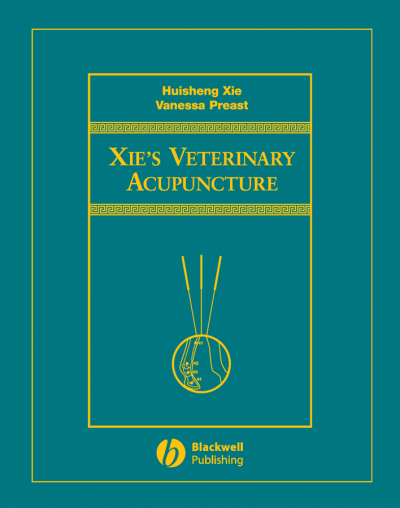


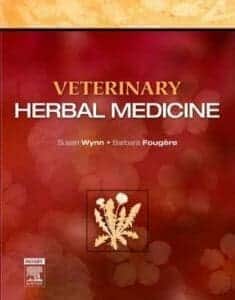
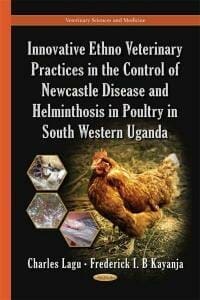
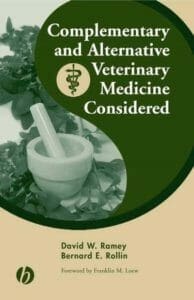
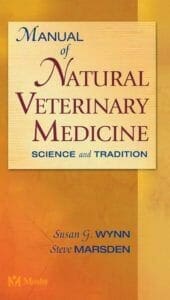

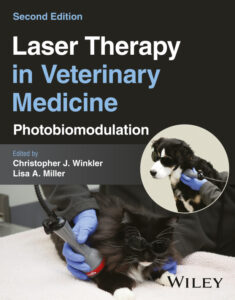
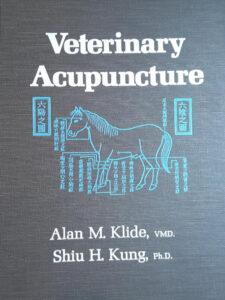






![Textbook of Veterinary Diagnostic Radiology 8th Edition [PDF+Videos+Quizzes] Thrall’s Textbook of Veterinary Diagnostic Radiology, 8th edition PDF](https://www.vet-ebooks.com/wp-content/uploads/2019/09/textbook-of-veterinary-diagnostic-radiology-8th-edition-100x70.jpg)


![Ettinger’s Textbook of Veterinary Internal Medicine 9th Edition [PDF+Videos] Ettinger’s Textbook of Veterinary Internal Medicine 9th Edition [True PDF+Videos]](https://www.vet-ebooks.com/wp-content/uploads/2024/10/ettingers-textbook-of-veterinary-internal-medicine-9th-edition-100x70.jpg)





